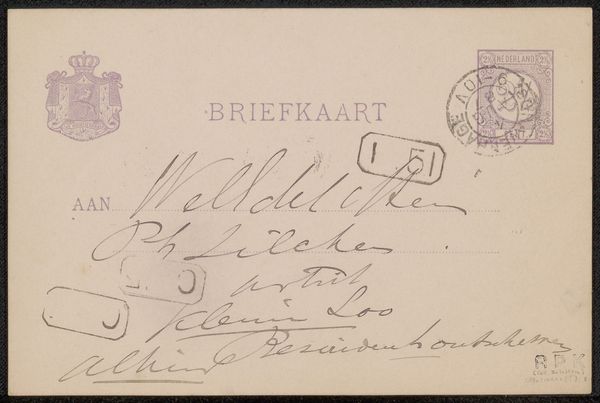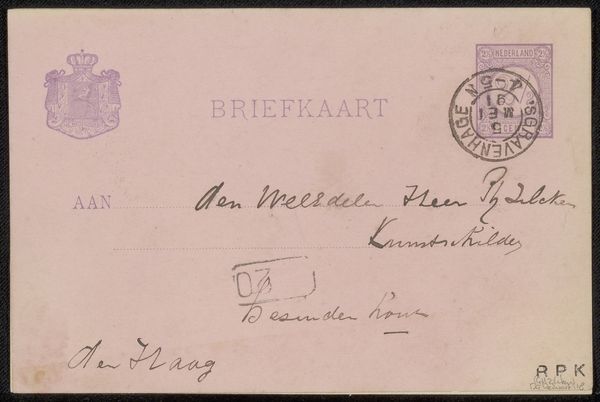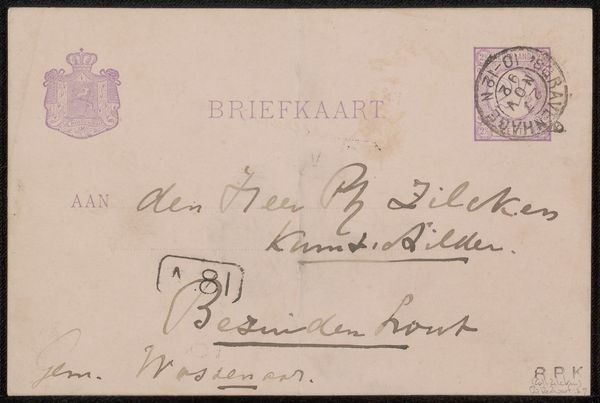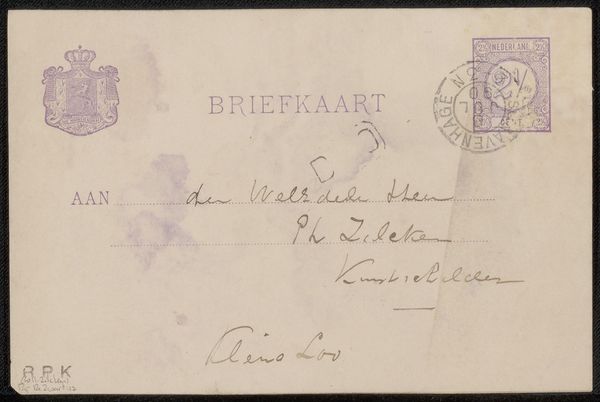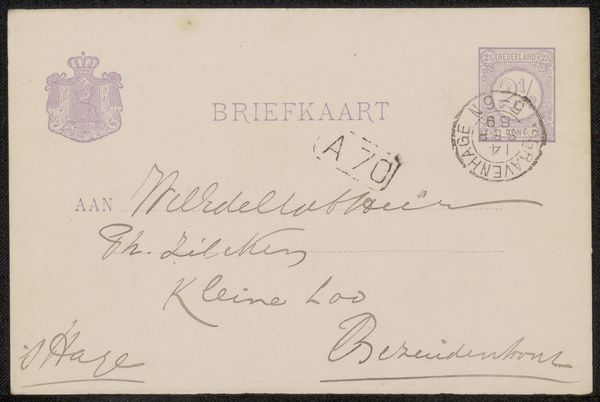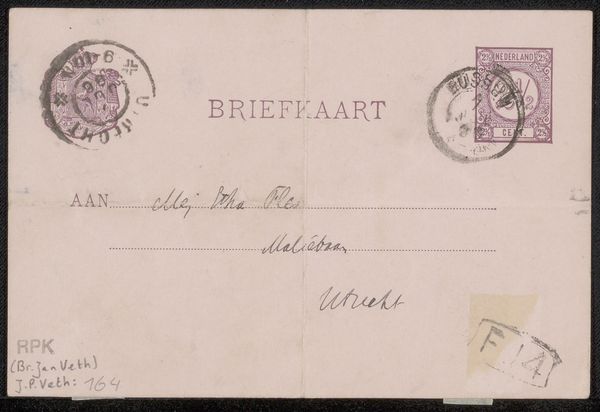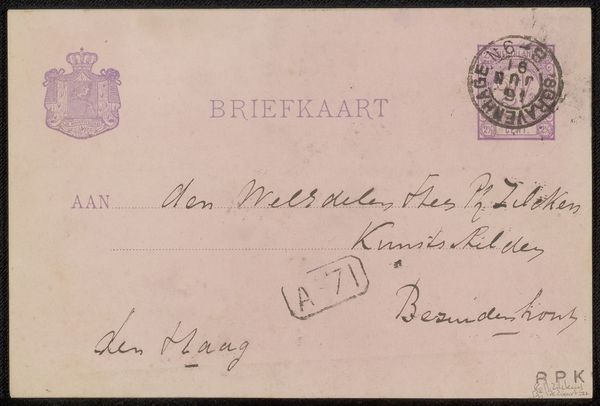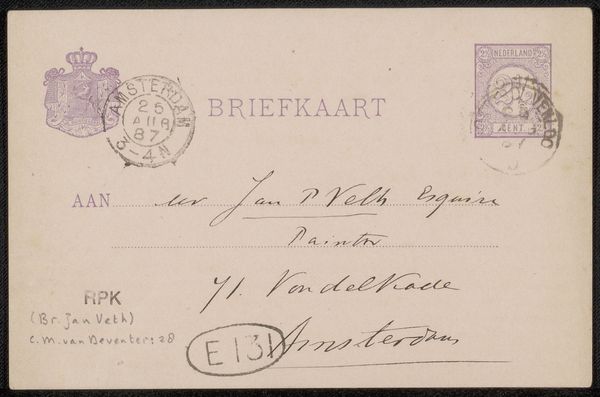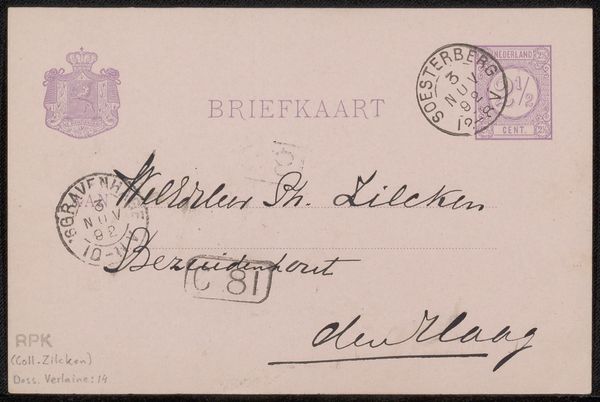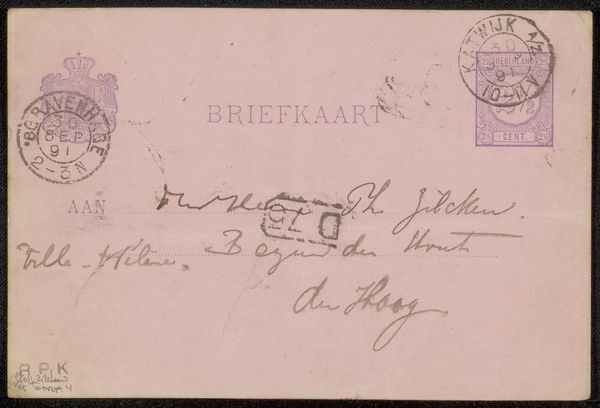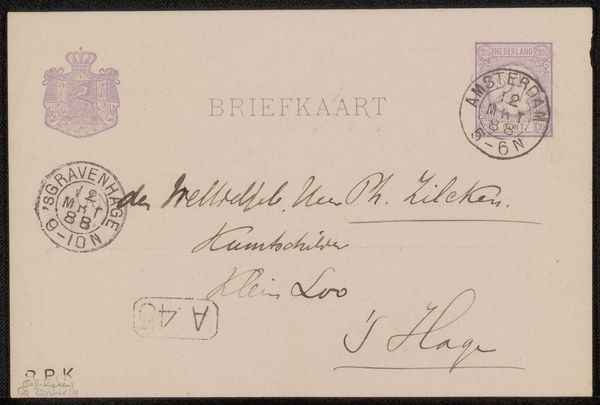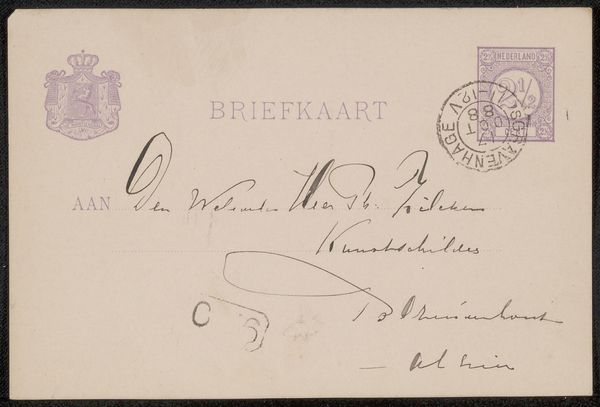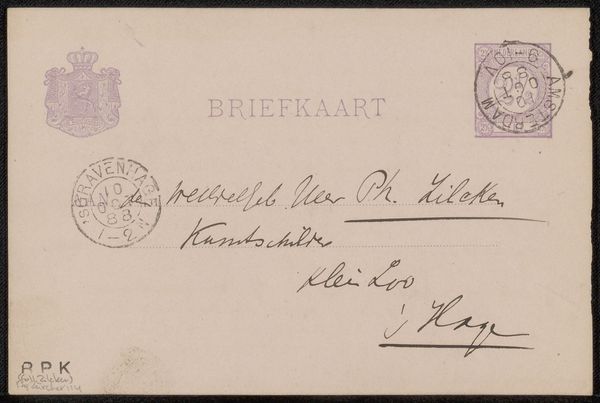
paper, ink
#
ink drawing
#
pen sketch
#
paper
#
ink
Copyright: Rijks Museum: Open Domain
Curator: Ah, look, an artifact of correspondence from a bygone era: Willem Witsen's "Briefkaart aan Philip Zilcken," likely penned between 1892 and 1895. It's an ink drawing, a quick pen sketch really, on paper. Editor: Immediately I'm drawn to the faded inscriptions and the aged quality of the paper—it whispers stories of a time marked by rigid social structures and nascent anti-colonial movements across Europe. Curator: Indeed. There's an intimacy here, a casualness implied by the form of a postcard. The stampings, the hurried script... imagine holding this connection in your hand. It’s interesting to ponder the dynamic between the sender and receiver. Were they close? Business partners? Editor: Thinking about Philip Zilcken as the receiver... who was he in this narrative, and what privilege did he hold that allowed him to be on the receiving end of such correspondence? Also, who was likely excluded from having access to communication like this? Curator: Good questions! This piece makes me wonder, too, about the hidden languages of that time – were there nuances in the cursive, certain phrases, understood only within their circles? Did Witsen ever think it might end up in a museum one day, laid bare for all to see? Editor: I think what is essential to consider is that art isn’t neutral; letters and correspondences such as this postcard can highlight not just personal exchange but the deep power imbalances and the political structures present. Curator: Perhaps so. Ultimately it remains a captivating fragment, and invites us to consider not only a potential friendship, but to consider it within its social and political frameworks. Editor: Exactly—a reminder to constantly interrogate not just the "what" but the "how" and "why" behind historical works and documents such as this one.
Comments
No comments
Be the first to comment and join the conversation on the ultimate creative platform.
